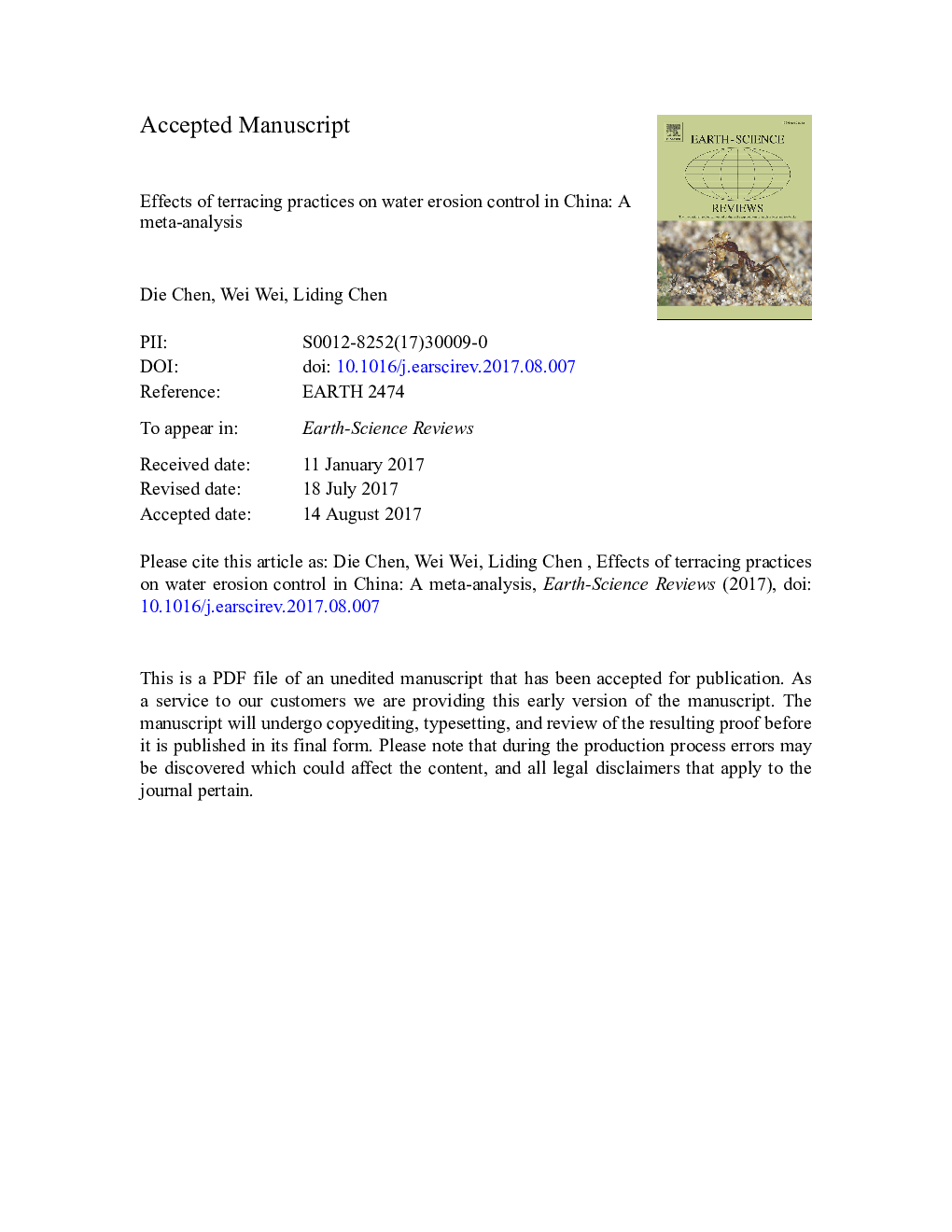| Article ID | Journal | Published Year | Pages | File Type |
|---|---|---|---|---|
| 5785054 | Earth-Science Reviews | 2017 | 35 Pages |
Abstract
Terracing has long been considered a strategy for soil and water conservation in many mountainous regions of the world. However, the effectiveness of terracing is limited by many factors, such as climate, soil properties, topography, land use, culture, demography and socioeconomic status. The aim of this critical review is to evaluate the roles of terracing on water erosion control in China. A meta-analysis of 601 runoff and 636 sediment observations involving a diversity of terrace structures was conducted. These 1237 observations involved level terraces, slope-separated terraces, slope terraces, zig terraces, fanya juu terraces and half-moon terraces, wide geographical locations within China, a diversity of land uses from forests to bare land, and a slopes ranging from 3° to 35°. The results confirmed that terracing significantly and positively affected water erosion control. In terms of different terrace structures, bench terraces were superior with respect to runoff and sediment reductions. Land use also played a crucial role in the efficiency of erosion control; terraces associated with tree crops and forests conserved the greatest amount of soil and water. In addition, a significant positive correlation between slope gradient (3°-15° and 16°-35°) and the effect of terracing on water erosion control was observed with the greatest decreases in water erosion occurred at slopes of 26°-35° and 11°-15°. This study revealed the effectiveness and variations of terracing with respect to water erosion control at the national scale and can serve as a scientific basis for land managers and decision makers. However with increasing urbanization, terrace abandonment increases as does the loss of place-based knowledge regarding terrace construction and maintenance.
Related Topics
Physical Sciences and Engineering
Earth and Planetary Sciences
Geology
Authors
Die Chen, Wei Wei, Liding Chen,
